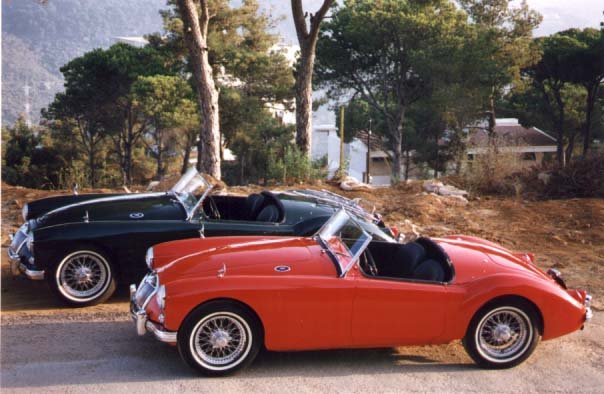1929 REO FLYING CLOUD
This is an original, unrestored ganster-style auto. The wooden spoke wheels are pristine. No rust. Runs and drives incredibly well.
A little Reo history:
Reo resulted from a 1904 argument at Olds Motor Works, the first car company founded by the tenacious Ransom Eli Olds. When colleagues began pressuring him to build four- and six-cylinder models that were more substantial than his little Curved-Dash Oldsmobile, Ransom ventured down the street to set up a rival concern. By year's end, this new R.E. Olds Company was called Reo Motor Car Company, after his initials. Ransom got his "revenge": through 1917, Reo outproduced Olds Motor Works.
From the company's beginning to 1919, Reo fielded one-, two-, four-, and six-cylinder cars. The firm's all-time production record, 29,000, came in 1928, by which time Reo was selling sixes only. After seeing car sales fall almost 30 percent in calendar-year 1929, Reo posted a $2 million loss on 1930 volume of about 12,500 cars and a like number of trucks. The Depression had hit, and Reo was mortally wounded. But even though the company never sold more than 5000 cars a year after 1932, some of those it did sell were memorable, and among the handsomest automobiles ever created.
The Flying Cloud Sixes of 1930 were little changed from 1929. That year's junior Reo was the 115-inch-wheelbase Model 15, basically the previous year's low-priced Flying Cloud Mate with the same 60-bhp, 214.7-cubic-inch Continental engine. Senior models, now called Flying Cloud Master, comprised the 120-inch Model 20 and 124-inch "25" powered by a 268.3-cid Reo engine with 80 bhp. Prices were in the upper-middle bracket at $1175-$1870 (after Depression-prompted cuts). Styling, by the talented and once unappreciated Amos Northup, was classic, formal, and finely proportioned. Workmanship was solid, furnishings top-quality.
January 1931 brought an expanded line that ultimately offered two new straight-eights. Model nomenclature denoted cylinders and wheelbase. The larger eight, delivering 125 bhp from 358 cid, was reserved for magnificent new 8-35 Royales on a strong double-drop frame with 135-inch wheelbase. It also powered companion 8-30 Flying Clouds. Anchoring the line was the new 6-25 with 85-bhp 268 six, selling at around $1800.
The Royale premiered at $2495 with three closed Murray-built bodies. All were smooth and truly beautiful, Northup pointing the way for everyone else with skirted fenders, rounded corners, and raked-back radiators. The 8-30 and 6-25 wore a more conservative version of this look. Reo also announced an immense new 152-inch Royale chassis for custom coachwork by Dietrich, comprising an imposing seven-passenger limousine and three convertibles. But apart from show models, few of those opulent Reos were ever built. Though all Royales had effortless performance with their big nine-main-bearing engine, they were hardly appropriate for hard economic times.
Reo spent $6 million on these initial 1931 models, hoping to spark sales. When sales failed to ignite, the firm threw additional variations at the market: a Royale 8-31; the Flying Cloud 8-25, with a new 90-bhp eight not much bigger than Reo's six; and the 6-21, really a 6-25 downpriced to the $995-$1100 region. But none of these caught on either, and Reo lost nearly $3 million on sales of just 6762 cars.
Still trying hard, Reo unveiled a smaller Flying Cloud in January 1932, the 117-inch-wheelbase 6-S. Carrying a debored 230-cid six with 80 bhp, this new entry-level line listed nine open and closed models in Standard and DeLuxe trim for $995-$1205. Eight-cylinder Clouds returned virtually without change. So did Royales, but the 8-31 and 8-35 were now nameless, and 8-52s were retagged Royale Custom. Of course, everything hinged on the 6-S, but it failed to make the needed impression, and Reo car sales fell to 3900 for the calendar year. Desperately seeking cash, the firm agreed to sell 6-S bodies and chassis to equally beleagured Franklin for that company's 1933 Olympic, which was nearly identical except for grille, hood, and air-cooled Franklin power.
With all this, Reo had no choice but to drastically cut its 1933 line. Thus, Flying Cloud Eights vanished in January. So did the 6-25, though its engine returned in a new low-end S-2 Flying Cloud that replaced the 6-S on an inch-longer wheelbase. The longest chassis was also dropped, leaving N-2 standard and Elite Royales on the 131-inch platform and N-1 Customs on the 135-inch chassis. Prices were cut too, but the cuts weren't enough to matter. Despite smoother styling and sturdier new X-member frames, Reo's calendar-year registrations fell to 3623, the lowest on record.
1-860-633-1256
Located in Connecticut
photo and early text credit: © 2011 hemmings.com
history text credit: © 2011 howstuffworks.com

